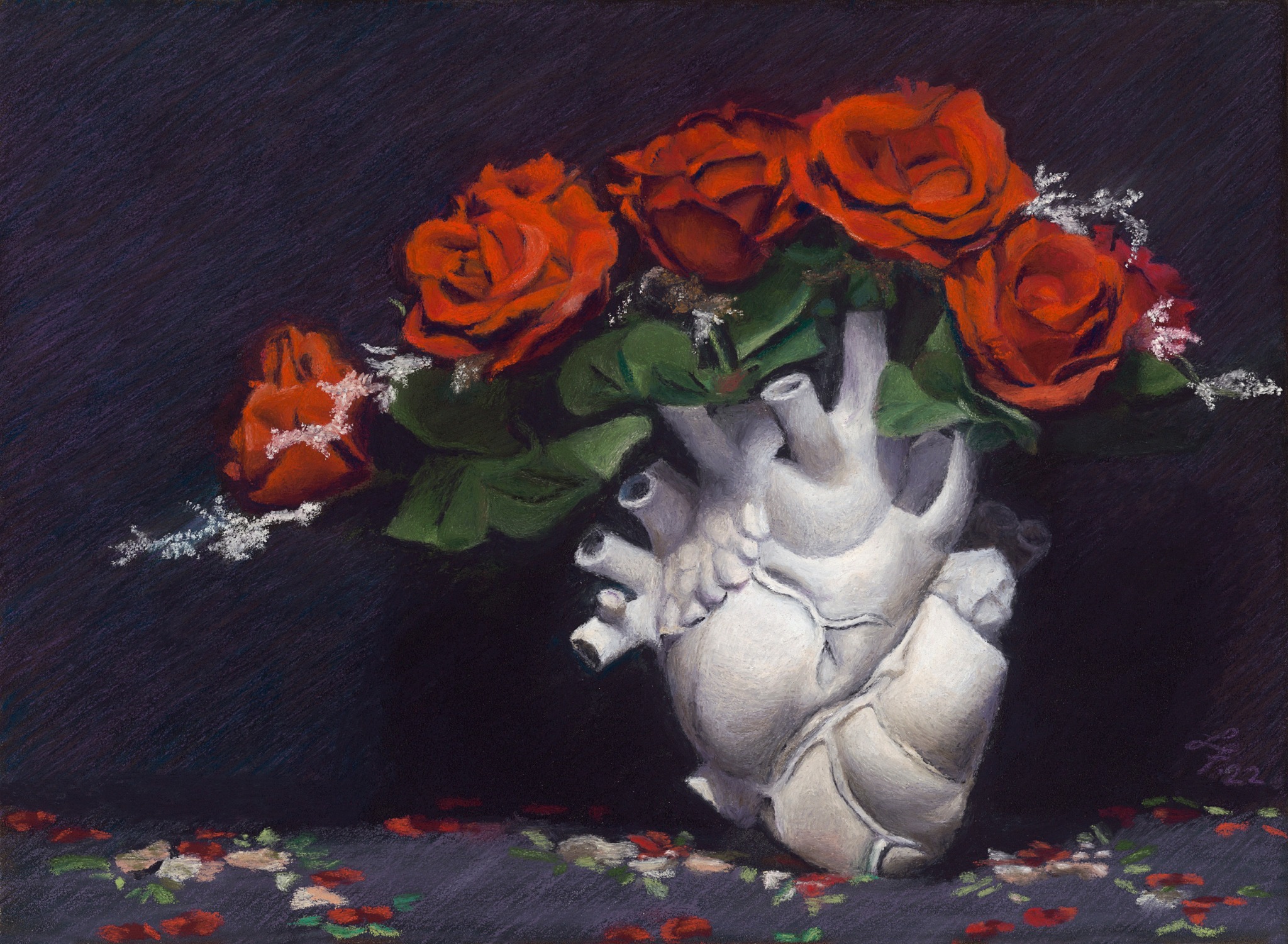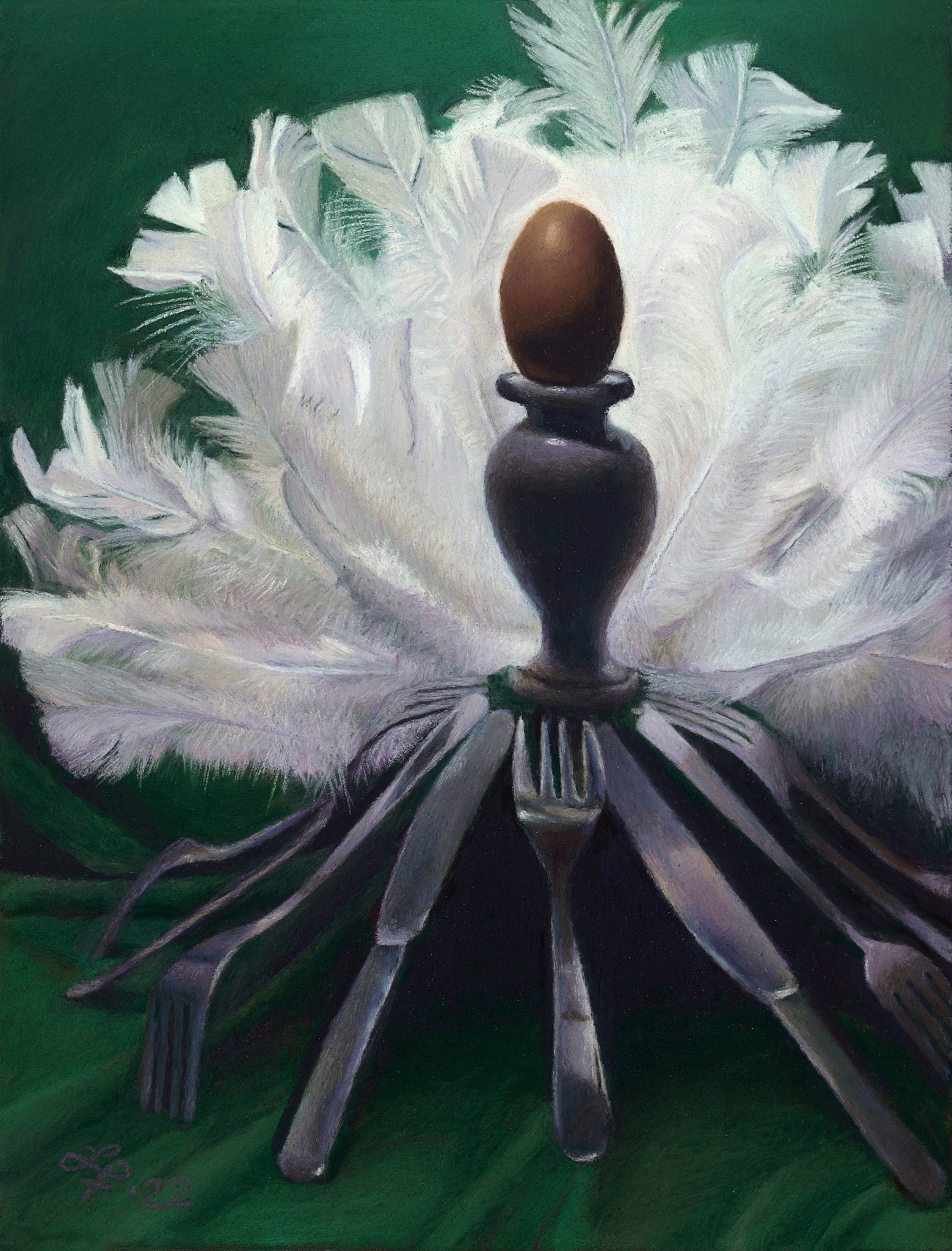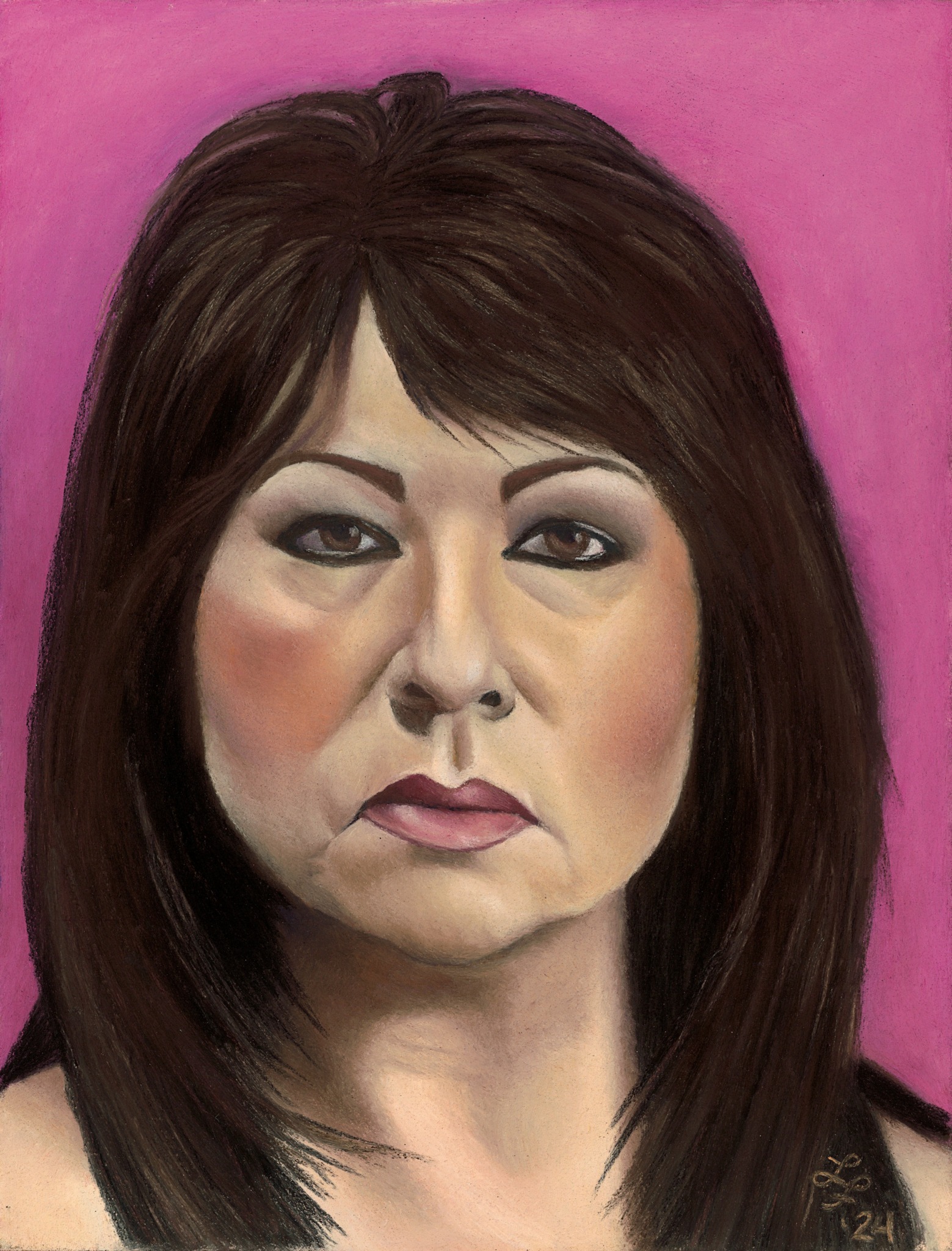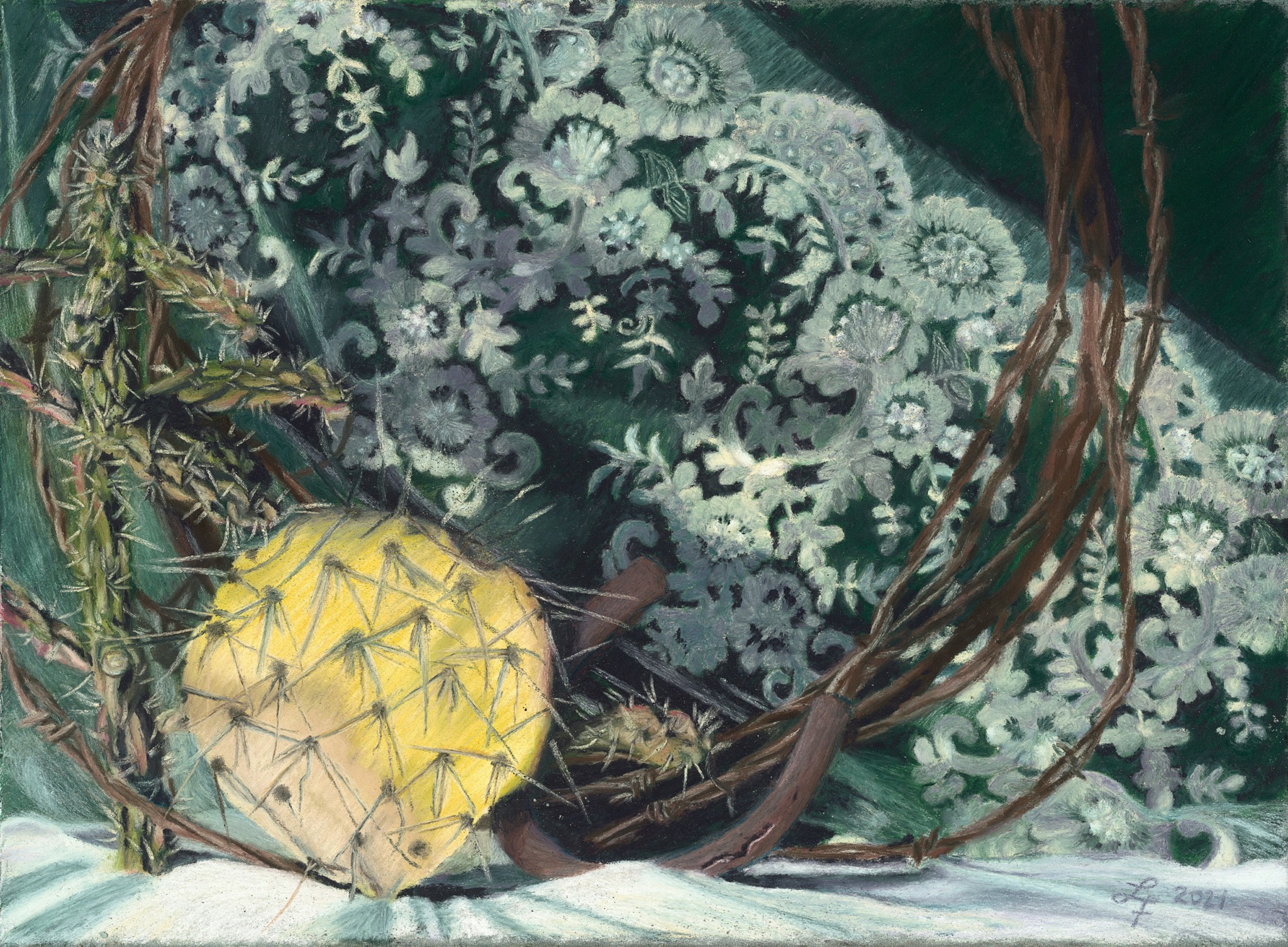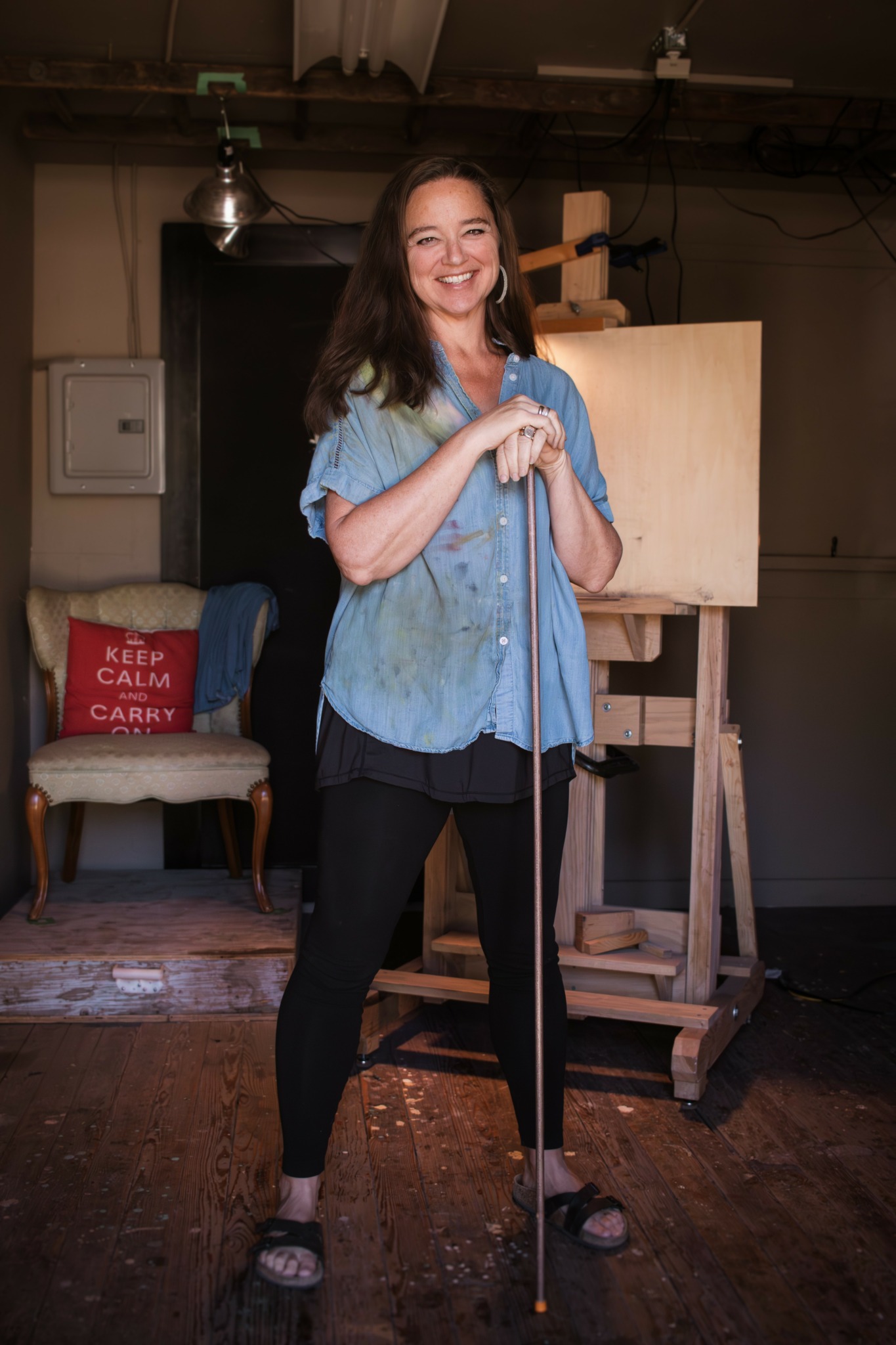We were lucky to catch up with Lucy Finch recently and have shared our conversation below.
Alright, Lucy thanks for taking the time to share your stories and insights with us today. Can you talk to us about a project that’s meant a lot to you?
In my 40s, I discovered the art education I never knew I wanted – atelier training in drawing and painting. Earlier in my life, I attended a university on an art scholarship and enjoyed studying art, but my art never progressed past a certain, clunky stage. So I switched degrees and forgot about art, although it popped up in different ways, no matter what job I took. But at the atelier, I learned how to see differently, and, along with age-old techniques, was amazed to learn that I could create 2D images that looked 3D.
At an atelier, training can last 5-7 years. You start by working in charcoal (a forgiving medium) to draw a cast, and once you demonstrate an understanding of values, you switch to oil paint and still life painting. Along the way, you do life drawings to practice capturing the human form.
After spending 2 years in charcoal, I was elated to switch to oil paint, only to find out I am highly allergic to oil paint and solvents. So I had to leave the atelier and continue my art education on my own. In my studio, I focused on still life paintings for a couple of years, refining my technique in soft pastel, and then I wanted to expand my education to the human form. So I asked a friend to sit for a portrait.
I loved the experience of spending time one-on-one with someone in such an intimate setting and realized I had a lot to learn about the human face, so I asked another friend and another. Soon they were telling their friends, and I was able to meet new people, hear their stories, and paint their portraits. Some of the women told me things they had never told anyone else, and a deep bond was formed. These women were survivors of terrible tragedies and somehow found their way back to laughing and loving, which I found incredibly inspiring. So, I decided to have an exhibition showcasing their portraits, sharing their stories, and hopefully inspiring others to move through trauma into peace.
Awesome – so before we get into the rest of our questions, can you briefly introduce yourself to our readers.
As a cisgender, post-menopausal woman of British and German ancestry who came late to understanding the systemic white male patriarchy in our world, I use my art to turn the typical still life on its head. Choosing historic Western European or contemporary American symbology, I explore my observations and experiences, oftentimes in unexpected and/or humorous ways. In celebration of women, I specialize in painting portraits of women who have survived trauma and found their way to happiness. Currently, I am working on a collaborative series of paintings focused on the 5 senses. Each painting is based on data collected from people around the United States via an online survey on my website. The goal is to help reduce modern-day stress by taking time to notice the sensual world all around us.
To create all my realistic paintings, I work in a black box studio with real objects (no photographs whenever possible) using techniques dating back to the Renaissance, including the sight-size method (painting the same size as the object observed), a black mirror, mahl stick, plum lines, and a viewfinder. One painting takes weeks or months to complete.
I studied at the Masters’ Atelier of Drawing and Painting under Nancy Lucas-Williams in Port Townsend, Washington. Currently, I live in New Mexico, where my artwork has been selected for multiple juried shows around the Nation.
Do you think there is something that non-creatives might struggle to understand about your journey as a creative? Maybe you can shed some light?
Being a creative person is full of dichotomies – on the one hand, the best artwork is created from a vulnerable place, sharing a moment or experience that caused great emotion, which takes courage. But, on the other hand, once it is created, the piece is completely up to the viewer to interpret, and they may not understand it and may even make fun of it, which can be hurtful for the artist to hear.
It is helpful to remember that art, at its core, is about self-expression. When you dismiss it or judge it, you are, in effect, judging someone. So be kind. After all, self-expression is vital for mental health, personal growth, and building meaningful connections. It allows us to be authentic, grow our self-esteem, and develop a sense of belonging.
And we are all self-expressing all the time, regardless of whether you are an artist or not. Everything you choose to do, from how you decide to dress in the morning to how you style your hair, to the car we drive, and even how we communicate at work. All of those examples are choices based on our preferences. And preferences are an expression of who you are.
When others comment on or make fun of our choices, it can be a blow to our self-esteem. And when it’s something we intentionally created, like a piece of art, it can be particularly difficult to hear thoughtless comments. So whenever you are viewing something created by someone else, take a moment to remember that at its core, it is a representation of someone’s inner life, and use that moment to appreciate their vulnerability, even if you don’t like the work.
Any resources you can share with us that might be helpful to other creatives?
When I was in college, I studied art history and never realized that over 98% of the artists presented were men. I was ridiculously naïve. Now, as I do a self-study of women in art history, I feel a connection across time. Many of these artists struggled to balance their partners’ needs, family obligations, and finances with time in the studio, just as I do. Seeing how they succeeded in creating beautiful art, often simply for the sake of creating art—without recognition, sales, or institutions to support and promote them—inspires me.
As part of my studies, I’ve come across excellent books about women in art throughout history, and I wish I had known about them earlier in my life. If I had, I think I would have felt more confident that, as a woman, I could make art, and I would have learned strategies for navigating the complex art world. Here are some of those resources:
“Representing Women” by Linda Nochlin,
“Women, Art, and Society” by Whitney Chadwick,
“The Trouble with Women Artists” by Laure Adler & Camille Viéville,
“Why Have There Been No Great Women Artists?” by Linda Nochlin, and
“The Story of Art Without Men” by Katy Hessel
Contact Info:
- Website: https://www.mosstudiocr.com/
- Instagram: https://www.instagram.com/mosstudiocr/
